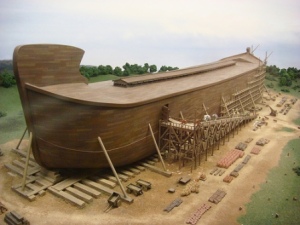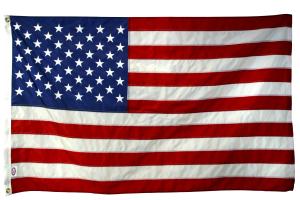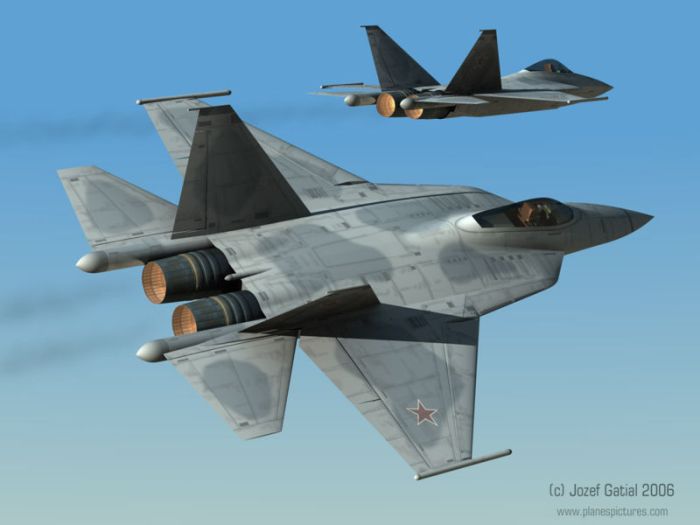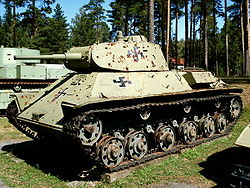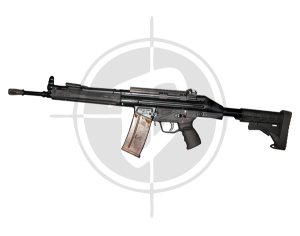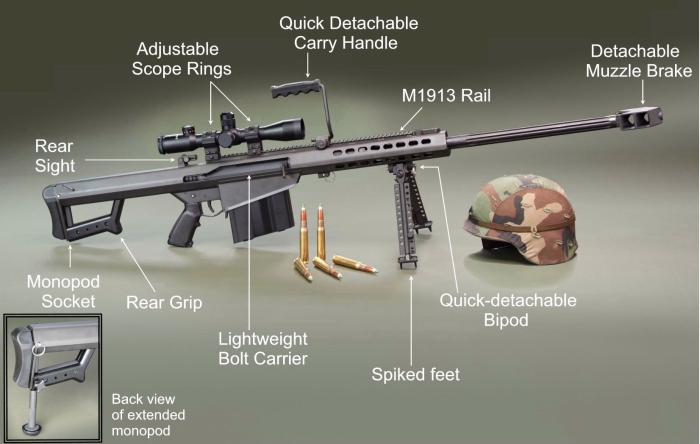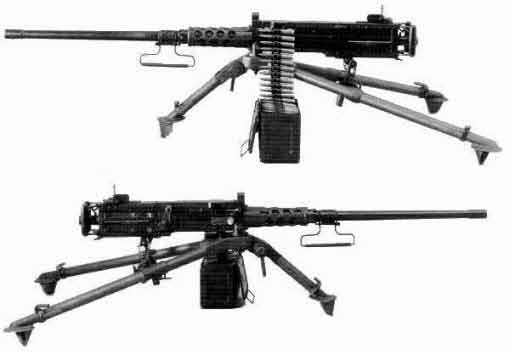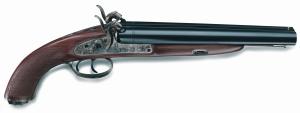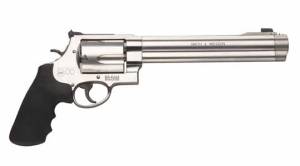“Fight Against Stupidity And Bureaucracy”
.
This week’s significant number is fifty, perhaps one of the most used numbers of them all. Maybe we are so used to having it around that we don’t pay it much attention at all.
Until now.
Enjoy.
.
.
The Number 50
.
.
In religion
- The 50th word of the King James Version of the Bible’s Old Testament, Book of Genesis is “light”;
- There are 50 chapters in the book of Genesis in the Old Testament;
- Noah’s Ark was 50 cubits in width. “The length of the ark shall be 300 cubits, the breadth of it 50 cubits, and the height of it 30 cubits.” (Genesis, VI.15);
- Pentecost in Greek means “50th”;
- Pentecost is a Jewish summer feast held on the 50th day after the Passover;
- Pentecost is also called Whitsunday, a Christian feast, which commemorates the Descent of the Holy Ghost upon the Apostles, 50 days after Easter (Resurrection of Christ);
- 50 is also said to be one of the holiest numbers, being the sum of the squares of the sacred Pythagorean 3-4-5 triangle, i.e., 9 + 16 + 25 = 50;
- In Kabbalah, there are 50 Gates of Wisdom (or Understanding) and 50 Gates of Impurity;
- The traditional number of years in a jubilee period.
.
.
In science and technology
- 50 is the Atomic Number of Tin (Sn) (one of the seven metals of the alchemists).
- 50 is the fifth magic number in nuclear physics.
.
.
In space
- Open star cluster Messier 50
.
- 50th Space Wing
- The 50th Space Wing (50 SW) is a wing of the United States Air Force under the major command of Air Force Space Command (AFSPC). It was activated on 30 January 1992, replacing the 2nd Space Wing, which was inactivated on the same date.
- The unit is the host wing at Schriever Air Force Base, located east of Colorado Springs, Colorado. Their primary responsibility is to track and maintain the command and control, warning, navigational, and communications satellites for AFSPC. The 50th Space Wing also manages the Global Positioning System.
- Typical satellite monitoring tasks such as tracking and telemetry are the main part of their mission, and in so doing, they employ more than 5600 personnel (active duty military, guard and reserve, contractors, and DoD civilians.)
.
.
In politics
- Hawaii was the 50th state to enter the union in 1960;
- There are now 50 stars on the flag of the United States of America, each representing one of the 50 states. The stars are arranged in 9 rows staggered horizontally and 11 rows staggered vertically. Diagonally they are: 1 + 3 + 5 + 7 + 9 + 9 + 7 + 5 + 3 + 1 = 50.
.
In sport
- The jersey number 50 has been retired by a number of North American sports teams in honor of past playing greats or other figures.
- In Major League Baseball: the Los Angeles Angels of Anaheim, for coach Jimmie Reese, who served with the team when it was known as the California Angels.
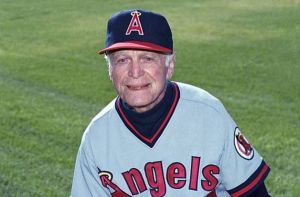
- In the NBA: the San Antonio Spurs, for Hall of Famer David Robinson.

- In the NFL: the New York Giants, for Hall of Famer Ken Strong.
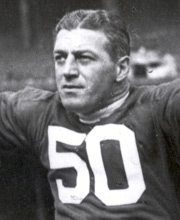
- No NHL team has retired the number, which is not frequently issued.
- Bill Barilko, was a hockey player whose final goal won the Toronto Maple Leafs the Stanley Cup. Four months and 5 days after he scored the winning goal to clinch Toronto’s seventh Stanley Cup, Barilko boarded a Fairchild 24, single-engine plane piloted by his friend Henry Hudson. He was returning home to Timmins from a fishing trip on James Bay. The plane vanished between Rupert House and Timmins. No trace of Hudson, Barilko or the Fairchild was discovered for 11 years, despite massive search efforts. The Maple Leafs were so distraught and unwilling to accept the tragedy that Barilko’s equipment remained in his usual locker room stall at the opening of the 1951 fall training camp. Rumors began circulating that Barilko, of Russian decent, had defected to the Soviet Union to teach his skills to young Soviet players. Finally on June 9, 1962, bush pilot Gary Fields came upon the wreck of a Fairchild 24, approximately 100 kilometers north of Cochrane, Ontario. Barilko was finally laid to rest in Timmins; the year that the Leafs won their first Stanley Cup since his disappearance 11 years earlier.
- The story of Barilko’s 1951 Stanley Cup heroics and his mysterious disappearance were the inspiration for The Tragically Hip song “Fifty Mission Cap”. The song appeared on the Canadian band’s third full-length album Fully Completely, and is often credited with reintroducing Barilko’s story to a younger generation.
.
.
In militaria
- Sukhoi T-50
- The Sukhoi PAK FA is a twin-engine jet fighter being developed by Sukhoi for the Russian Air Force. The Sukhoi T-50 is the prototype for PAK FA.
- The PAK FA is one of only a handful of stealth jet programs globally.
- The PAK FA, a fifth generation jet fighter, is intended to be the successor to the MiG-29 and Su-27 in the Russian inventory and serve as the basis of the Sukhoi/HAL FGFA being developed with India.
- The T-50 prototype performed its first flight 29 January 2010.
- By 31 August 2010, it had made 17 flights and by mid-November, 40 in total. The second T-50 was to start its flight test by the end of 2010, but this was delayed until March 2011.
- The Russian Defence Ministry will purchase the first 10 evaluation example aircraft after 2012 and then 60 production standard aircraft after 2016.
- The first batch of fighters will be delivered with current technology engines.
- The PAK-FA is expected to have a service life of about 30–35 years.
.
- T-50 light infantry tank
- The T-50 light infantry tank was built by the Soviet Union at the beginning of World War II. However it was complicated and expensive, and only a short production run of 69 tanks was completed. Furthermore, even before it was ready for mass-production wartime experience invalidated the underlying concept of light tanks.
.
- MKE T 50
- The HK33 is a 5.56mm assault rifle developed in the 1960s by West German armament manufacturer Heckler & Koch GmbH (H&K), primarily for export.
- Capitalizing on the success of their G3 design, the company developed a family of small arms (all using the G3 operating principle and basic design concept) consisting of four types of firearms: the first type, chambered in 7.62x51mm NATO, the second—using the Soviet 7.62x39mm M43 round, third—the intermediate 5.56x45mm caliber and the fourth type—chambered for the 9x19mm Parabellum pistol cartridge.
- The HK33 series of rifles were adopted by the Brazilian Air Force (Força Aérea Brasileira or FAB), the armed forces of Thailand and Malaysia where they were produced under a license agreement. The rifle was also license-built in France by MAS and in Turkey by MKEK. The HK33 is no longer manufactured or marketed by Heckler & Koch.
- M107
- The M107, with a family of ammunition, enables sniper teams to employ greater destructive force at greater ranges and complements the anti-personnel precision fire capability of the M24 (7.62mm, bolt action) Sniper Weapon System (SWS).
- The primary mission of this rifle is to engage and defeat materiel targets at extended ranges to include parked aircraft; command, control, communications, computers, and intelligence (C4I) sites; radar sites; ammunition; petroleum, oil and lubricants; and various other thin skinned (lightly armored) materiel targets out to 2000 meters.
- The M107 can also be used in a counter sniper role taking advantage of the longer stand off range and increased terminal effect when opposing snipers armed with smaller caliber weapons out to 1000 meters.
- It is a semi-automatic, air-cooled, box magazine-fed rifle chambered for .50 caliber ammunition and with a 10-round removable magazine. This rifle operates by means of the short recoil principle, rather than gas.
.
- Browning M2 .50 caliber (12.7mm) Machine Gun
- The Browning M2 .50 caliber (12.7mm) Machine Gun, is an iconic World War II era automatic, belt-fed, recoil operated, air-cooled, crew-operated machine gun. It is currently fielded by 20 different militaries around the world.
- The M2 machine gun is crew transportable with limited amounts of ammunition over short distances. The M2 HB machine gun is used to engage dismounted infantry, crew-served weapons, ATGM teams, light-armor vehicles, and aircraft.
- It fires from the closed-bolt position and is belt fed, recoil operated, air cooled, and crew operated. By repositioning some of the component parts, ammunition may be fed from either the left or right side. A disintegrating metallic link-belt is used to feed the ammunition into the weapon. The gun is capable of single-shot (ground M2), as well as automatic fire. The AN/TVS-5 night-vision sight can be used with the M2 machine gun.
.
- Howdah Hunter
- During the first British colony government period in India, starting from 1840, the Howdah pistols were preferred by the army officers detached in the widest territories of the Empire.
- It is a classic large caliber double barrel pistol in the English gunsmith school style, used at close range to stop tigers which commonly leaped upon elephants carrying hunters in a Howdah in the far away colonial territories.
- It is normally finished with blued barrels, engraved locks featuring wide animals in their natural habitat, and case hardened color finish. The walnut pistol grip stock is checkered and finished with a steel butt cap. Barrel Length 11 1/4″. Weight 4.41 lbs. (20 ga), 5.07 lbs. (.50)
.
- Desert Eagle
- Although an American idea, the “Desert Eagle” was developed in Israel by the IMI (Israel Military Industries) in the early 1980s. The first Desert Eagles were manufactured in Israel and started appearing on gun dealers’ shelves in the US around 1985. Following a problem in meeting demand for the pistols in 1992 (and probably fearful of the prospect of government import limitations), Magnum Research started assembling parts of the gun in the US and currently is working toward full assembly and possibly manufacture of the guns stateside.
- Given the fact that the IMI is best known for the Uzi series of submachine guns and the Galil rifles, it isn’t surprising that the Desert Eagle departs radically from many other semi auto pistol designs, though the exterior belays this. The basic layout is like that of most other modern semi auto pistols (with the magazine release on the side of the grip, slide release on the left side of the frame, and a thumb-activated slide safety).
- Internally it is different. The pistol is gas-operated with a system that is more like a rifle than the delayed blow-back systems used with most other semi auto hand guns. The gas system employs a fixed, shrouded barrel which stays in position on the frame during firing, with gas coming up a port just ahead of the chamber to operate a three-lug rotating bolt that rides in the slide assembly. The fixed barrel gives the gun a lot of potential accuracy, a potential realized with most of these pistols when fired with quality ammunition.
- In addition to .357 Magnum, .41 AE, .41 Magnum, and .44 Magnum chamberings, the Desert Eagle is also available chambered for the .50 AE (Action Express).
.
- The Smith & Wesson 50 calibre Revolver
- Billed by Smith & Wesson as the most Powerful Production Revolver in the World Today, this S&W revolve uses the massive .500 S&W Magnum® Cartridge with 2600 ft/lb. Muzzle Energy.
- It is designed as a hunting handgun for any game animal walking.
.
.
In books, tv, movies and music
- The TV show Hawaii Five-O and its reimagined version, Hawaii Five-0, are so called because Hawaii is the last (50th) of the states to officially become a state.
- From the tv show, the term 5-O (Five-Oh) has become slang for police officers and/or a warning that police are approaching. Derived from the television show Hawaii Five-O
- 50 First Dates. A Groundhog Day type of movie starring Adam Sandler as Henry Roth, a man afraid of commitment up until he meets the beautiful Lucy. They hit it off and Henry think he’s finally found the girl of his dreams, until he discovers she has short-term memory loss and forgets him the very next day.
- 50/50. Inspired by a true story, a comedy centered on a 27-year-old guy who learns of his cancer diagnosis, and his subsequent struggle to beat the disease.
- Fifty shades of grey, the mummy-porn novel that became a huge seller in 2012
- Nickname of famous hip hop / rap legend 50 Cent.
- Paul Simon 50 ways to leave your lover
- 50 Ways To Say Goodbye by Train
- Train frontman Pat Monahan penned this song with Espionage, the Norwegian production duo that helped pen “Hey Soul Sister.”
- Espionage is made up of Espen Lind and Amund Bjørklund and amongst their other credits are Beyoncé’s “Irreplaceable” and Chris Brown’s “With You.”
- The song follows a similar theme to Paul Simon’s “50 Ways To Leave Your Lover,” though in this instance it’s the narrator’s pride that has been hurt as he looks for excuses to tell his friends why she’s disappeared from his life.
- 50 Words For Snow Kate Bush
- 50 Words For Snow comprises seven songs “set against a background of falling snow.” The album was released through the singer’s personal imprint, Fish People.
- Speaking to American radio station KCRW, Bush said that the idea for this song came from thinking about the myth that the Inuit Eskimos have 50 words for snow. She then decided to make up increasingly fantastical words herself, and recruited actor and writer Stephen Fry to recite the 50 synonyms. They include such words/phrases as “spangladasha,” “mountain-sob, “blown from Polar fur,” and “shimmer-glisten.”
- Whilst the Inuit did have about as many words for snow as the English (and now a lot less after Bush’s verbal creations for the frozen precipitation), the Sami in Finland have in excess of 50.
.
.
In other stuff
- Cities located on latitude 50 degrees north include Cologne and Frankfurt, Germany; Brussels, Belgium; Maastricht, Netherlands; Portsmouth, Exeter, Plymouth and Brighton & Hove, England; Regina, Saskatchewan, and Kamloops, British Columbia, Canada; Kiev, Ukraine; Prague, Czech Republic; Kraków, Poland; and Kharkov, Ukraine.
- Cities located on longitude 50 degrees west include Assis, São Paulo, Brazil.
- Cities located on longitude 50 degrees east include Dammam, Saudi Arabia; Samara, Russia; and Manama, Bahrain.
- The percentage (50%) equivalent to one half, so that the phrase “fifty-fifty” commonly expresses something divided equally in two; in business this is often denoted as being the ultimate in equal partnership.
- In millimeters, the focal length of the normal lens in 35 mm photography.
- Gold wedding anniversary celebrates 50 years of marriage.
- The Roman numeral for 50 is L.
- A Canadian brand of beer called 50 Ale created in 1950 by Labatt breweries to commemorate 50 years of partnership. It is a popular brand still sold today.
- The speed limit, in kilometers per hour, of Australian roads with unspecified limits.
- Jason and 50 Argonauts sailed on the ship Argo on a quest for the Golden Fleece in Colchis (Black Sea).
- Tineke Hybrid Tea Rose has 50 double broad petals.
=============
.

